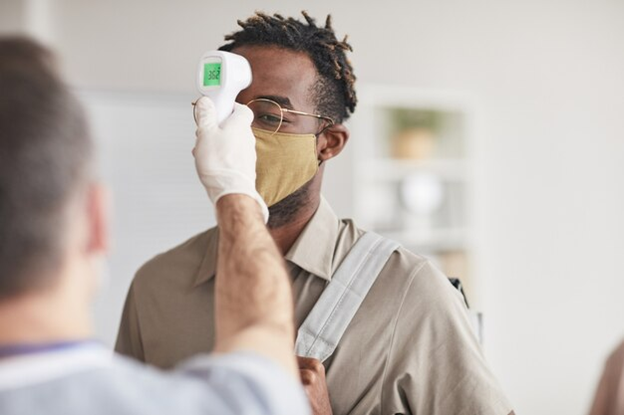Monsoon fever is a common illness that occurs during the rainy season. The reason it’s prevalent during this time is due to the wet environment, which can lead to the spread of infections. The primary symptoms include fever, chills, and body aches. During monsoon, these signs are common due to more mosquitoes and increased humidity.
When you notice symptoms like a fever that lasts several days, feeling extremely tired, or experiencing body pains, it’s crucial to pay attention. These symptoms suggest it might be time to consider a monsoon fever test. Early recognition of these signals can lead to quicker recovery and prevent spread.
If you experience a persistent fever along with severe fatigue, considering a monsoon fever test could be wise. Testing becomes necessary when the fever doesn’t subside, or when other symptoms worsen over time. This test is pivotal to diagnose what might be causing the fever, ensuring appropriate treatment follows.
In summary, understanding when to get a monsoon fever test is about recognizing persistent symptoms and taking action. With timely intervention, it’s possible to manage symptoms effectively, ensuring a speedy recovery during this wet season.
The Importance of Early Detection and Routine Check-Ups

Getting ahead of any illness, especially during the monsoon, can save time and worry. Early detection of monsoon fever is vital because it helps catch the illness before it turns severe. This means treatment can start sooner, which often leads to a quicker recovery.
Routine health check-ups during the monsoon season are more than just a precaution. They help detect underlying health issues and ensure that existing conditions don’t worsen. Many health specialists emphasize the value of these regular check-ups in maintaining overall well-being. By catching potential problems early, individuals can avoid more serious health complications down the road.
Statistics demonstrate that individuals who undergo early testing for monsoon-related illnesses significantly reduce their recovery time. For example, early testing can cut recovery duration by half, allowing for fewer missed days at work or school. This is a clear advantage in staying healthy and maintaining regular activities.
By prioritizing early detection and regularly scheduling check-ups, you not only safeguard your health but also promote resilience against diseases. A proactive approach during monsoon season can make all the difference in managing one’s health effectively.
Getting Ready for Your Monsoon Fever Test
Preparing for a monsoon fever test involves knowing what to expect beforehand. The process typically starts with a visit to your healthcare provider. They will discuss your symptoms, possibly asking about your recent activities or travels to identify potential infections.
Next, a simple blood sample or, in some cases, a urine sample may be required to confirm the presence of infection. Knowing about this helps prepare mentally, reducing anxiety on test day.
Being well-rested the night before and staying hydrated are practical steps in getting ready for your test. These small actions can make the procedure smoother and more comfortable. Overall, being informed and prepared ensures that your monsoon fever test experience is as straightforward and stress-free as possible.
Exploring Testing Innovations and Diagnostic Options
Today’s technological advancements have significantly improved the accuracy of diagnosing monsoon fever. New methods and tools have been developed, making it easier for healthcare providers to detect infections early and treat them effectively.
One such innovation is at Lotus Diagnostics, where several diagnostic methods are offered. These include rapid testing kits that deliver quick results, enabling timely treatment decisions. The emphasis on precision and cost-effectiveness makes them a preferred choice for many.
Taking advantage of these innovative options rather than relying on traditional tests ensures more accurate findings. This means treatments can be more tailored and effective, leading to better patient outcomes. Encouragement to opt for these advancements can ensure individuals receive the most accurate care possible.
These diagnostic options support better health management strategies, making them essential tools for tackling illnesses during monsoon season.
Actionable Prevention Strategies to Combat Monsoon Fever
Preventing monsoon fever is about adopting smart lifestyle changes and being well-informed. Here are some practical ways to boost immunity during the rainy season:
- Healthy Diet: Eat more fruits and vegetables rich in vitamins. This helps strengthen your body’s defenses.
- Stay Hydrated: Drink plenty of water to keep your body well-hydrated, which fights off infections more effectively.
- Get Enough Sleep: A good rest helps the body repair and maintain itself.
Beyond personal habits, there are various community initiatives aimed at enhancing public awareness about monsoon-related illnesses. Local health organizations and governments often conduct campaigns to educate the public on prevention tips and available resources for illness management.
Programs often focus on: – Mosquito control measures in communities to reduce breeding sites. – Public information campaigns on hygiene and sanitation.
Lotus Diagnotics plays a role in these efforts by offering reliable and cutting-edge diagnostic services. Their commitment to health excellence supports community welfare, especially during monsoon season.
The essence of these strategies lies in prioritizing health checks and embracing preventive tips. Act today to safeguard your health during the rainy season. For reliable testing services, consider Lotus Diagnostics, where quality healthcare meets innovation. With these thoughtful measures, staying healthy and safe during monsoon is within reach.

